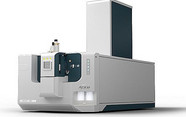10 reasons why academics should be using multi-detector SEC for polymer characterisation

contributed by Malvern Panalytical |
Discover the benefits of multi-detector SEC for characterising the molecular weight and structure of synthetic polymers
Introduction
Polymers are fundamental in our everyday life. Thanks to their numerous properties they can be used in plastics, fibres, adhesives or rubber, but polymers are also in our bodies in the form of proteins. The large number of polymers produced nowadays by both the industrial and the academic world includes polymers with different chemical natures and structure. Polymer scientists are constantly developing new types of synthetic polymers and modifying natural polymers to create materials with a wide variety of properties. The continuous research to produce better performing polymers has driven the academic world to synthesise novel polymers by means of several polymerisation techniques. The polymer synthesis process is continuously developing in order to produce model polymers with the desired characteristics. A ‘perfect’ polymer or, at least, a well-characterised polymer, is what scientists need in order to gain a better understanding of the relationship between structure and properties. Being able to correlate the polymers molecular characteristics with their physical properties leads to a better formulation and application of the polymers produced. Thus, it is evident that the full characterisation of the materials synthesised is fundamental for polymer scientists. The use of multi-detector Size Exclusion Chromatography (SEC), allows researchers to measure the absolute molecular weight, dispersity and structure of their materials. Having accurate and precise information about the polymers produced quickly is fundamental for the synthesis and modification of novel materials, which can be tailored to have desired physical properties.
SEC, also known as Gel Permeation Chromatography (GPC), is a liquid chromatography technique commonly used for the characterisation of polymers. The analysis of the materials is based on a separation mechanism that involves the distribution of the molecules between the pores of the column and the eluent. The distribution of the molecules within the pores and the eluent is a diffusion mechanism and the molecules do not interact with the column. This leads to the separation of the polymers in terms of their molecular size, as the name Size Exclusion Chromatography suggests, and not in terms of their molecular weight. The technique is carried out under good solvent conditions and can utilise a variety of good solvents for different types of polymers making this a universal technique that most polymer scientists find useful to have.
This white paper lists ten reasons why an academic scientist should use a multi-detector SEC system.
Log in or register to read this article in full and gain access to The Analytical Scientist’s entire content archive. It’s FREE!

















